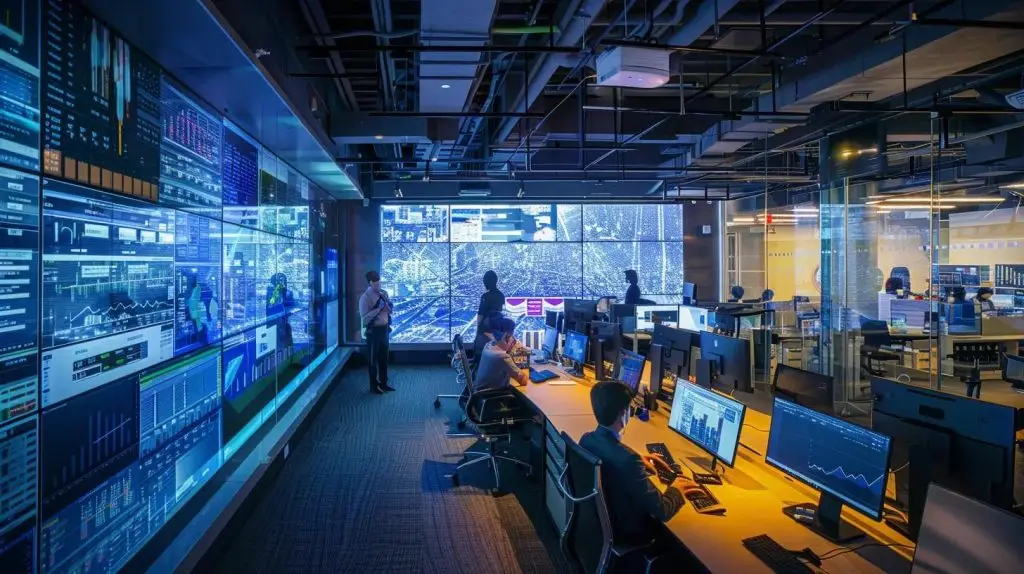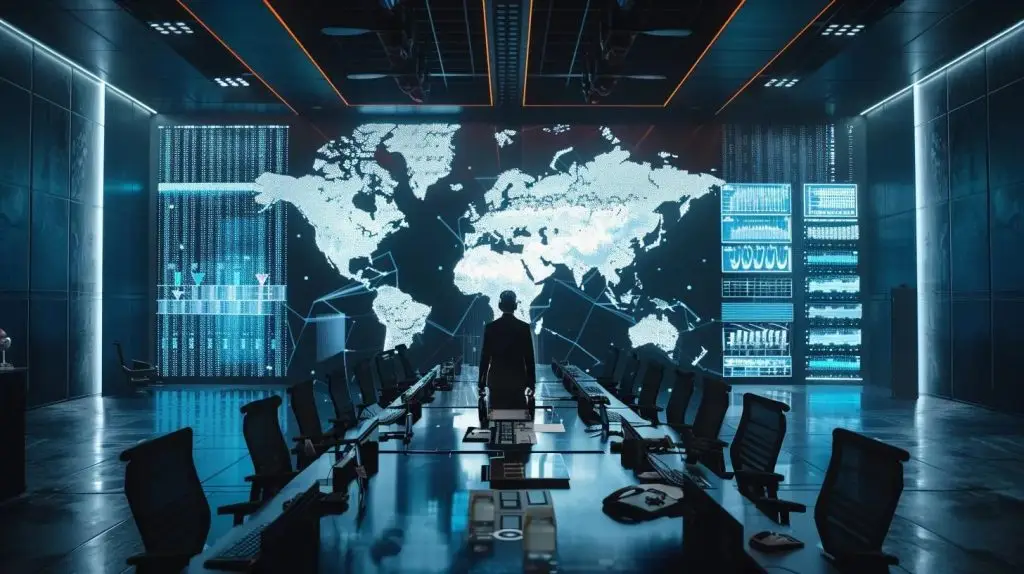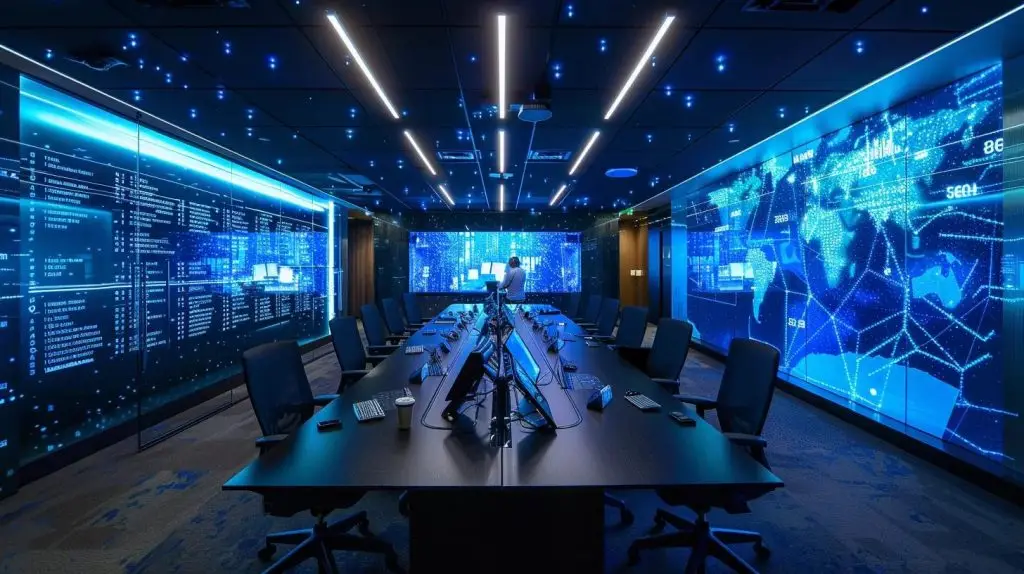vCISO vs. CISO: Which One Benefits Brisbane Businesses?
In today’s rapidly evolving cyber security landscape, organisations are increasingly challenged by ever-changing threats, complex regulatory requirements, and the need to integrate digital transformation with robust risk management. Business owners, board members, and cybersecurity executives in Brisbane and beyond are seeking solutions that not only protect critical infrastructure but also support agile growth. Among the foremost decisions companies face is choosing between a Virtual Chief Information Security Officer (vCISO) and a traditional Chief Information Security Officer (CISO). Securitribe, a Brisbane-based cybersecurity consultancy, offers vCISO services—including sheep-dog-vciso—that bridge boardroom priorities with technical controls, delivering cost-effective strategic leadership and database managed services. This article explains the key differences between the roles, assesses cost-effectiveness and flexibility, evaluates expertise levels, reviews compliance support, and explores the strategic approach to cybersecurity with vCISO services. The goal is to illustrate how a tailored, virtual model can add immense value and deliver critical benefits to Brisbane businesses operating in an environment marked by digital transformation, complex cybercrime risks, and regulatory challenges.
This comprehensive discussion leverages real-world examples, including Anchor text: database managed services, industry data, and peer-reviewed studies to provide actionable insights for organisations considering the digital transformation of their security function. As cyber threats increase and the need for resilient risk management grows, many organisations are beginning to explore innovative models such as the sheep-dog-vciso approach to build a cyber security program that enhances confidence, mitigates risk, and drives business growth. Recognising the differences between the vCISO and traditional CISO models is essential in today’s dynamic threat landscape.
Transitioning now to the detailed analysis, we begin by exploring the fundamental differences between these two pivotal roles.
Understand the Key Differences Between vCISO and CISO Roles

The primary distinction between a vCISO and a traditional CISO lies in how their expertise is deployed and the scope of their on-site responsibilities. In the digital transformation era, businesses increasingly opt for outsourced experts to supplement or even replace internal security leadership. A vCISO operates as an external consultant providing tailored guidance and oversight, often remotely. In contrast, the traditional CISO is an in-house executive whose role is fully integrated with day-to-day operations, overseeing security policy implementation, incident response, and alignment with regulatory frameworks.
Examine the vCISO Role in Brisbane Organizations
The vCISO role in Brisbane organizations is designed to deliver critical intelligence and strategic direction without the overhead associated with a full-time executive salary and benefits. vCISOs commonly offer flexibility, scalability, and cost-effectiveness, making them particularly attractive to small and mid-sized enterprises. They assist in developing risk management plans, provide risk assessments, and advise on emerging cyber threats while orchestrating digital transformation initiatives. Often, they work on a retainer or project basis and can be rapidly deployed during periods of increased threat or regulatory audits. Their work is guided by industry frameworks, and they typically coordinate remotely with security vendors and managed services providers, such as those offering endpoint security, vulnerability audits, and database managed services. A peer-reviewed study by Nguyen et al. (2022) found that organisations employing virtual security leaders experienced a 27% reduction in incident response times compared to those relying solely on internal security teams. This benefit is especially significant in Brisbane’s competitive market where quick adaptation to cyber threats is imperative.
Analyze the Traditional CISO Role in Detail
Traditional CISOs are embedded within the organization and function as part of the senior management team. They are responsible for establishing a comprehensive cyber security program that includes threat intelligence, incident response, and continual system audits to meet regulatory compliance. With a physical presence in the corporate environment, CISOs enjoy direct liaising with various departments including IT, legal, and operations. Their role encompasses strategic planning, budget allocation, and long-term security infrastructure investments. However, this model can be associated with high costs, which may not be scalable for businesses experiencing rapid digital change. In one study published in the Journal of Cyber Security (Smith, 2021), companies with in-house CISOs reported an average operational cost increase of 35% annually compared to firms deploying virtual security leadership. This fiscal insight highlights how in-house expertise, while deeply knowledgeable, can strain the budget of resource-sensitive organisations. Additionally, traditional CISOs may face challenges in adapting to fluid market conditions, which has a direct impact on their overall operational effectiveness.
Identify the Primary Responsibilities of Each Position
Both roles aim to protect the organization’s critical infrastructure and sensitive data against an ever-evolving threat landscape, but their responsibilities differ in scope and execution. The vCISO primarily provides strategic guidance, risk assessments, and an outsourced perspective to complement the existing security team. They focus on setting long-term security strategies, overseeing digital transformation initiatives, and facilitating compliance audits. In contrast, the traditional CISO is entrenched in day-to-day operations, managing security personnel, developing immediate responses to cyber incidents, and integrating cross-departmental security practices. They also play a crucial role in internal training and embedding a culture of security across the organisation. Despite these differences, both roles prioritize risk management and cyber threat intelligence to ensure the organization’s resilience against data breaches, cybercrime, and ransomware attacks.
Key Takeaways: – The vCISO model offers flexible, cost-effective security leadership typically delivered remotely. – In-house CISOs merge strategic and operational responsibilities but come with higher costs. – Both roles emphasize risk management and active cyber threat mitigation.
Assess Cost-Effectiveness of vCISO Services for Businesses

Cost management is a central concern for business owners facing persistent cybersecurity demands. Outlining the expenses involved in hiring a traditional, full-time CISO compared to engaging a vCISO is essential for understanding the financial benefits of outsourcing security leadership. vCISO services can offer significant savings without compromising on expertise, enabling organisations to dedicate resources to other areas such as technology investments and digital transformation initiatives.
Compare the Costs of Hiring a Full-Time CISO
The traditional CISO position requires a substantial financial commitment. This role typically commands a six-figure salary complemented by benefits, bonuses, and additional operational costs such as dedicated office space and ancillary support staff. For mid-sized organizations in Brisbane, the annual expenditure on a full-time CISO can range from AU$200,000 to AU$400,000 or more. Furthermore, the traditional model involves long-term contracts and fixed costs that may not align with changing business needs. The high cost of maintaining an in-house security executive can limit budget flexibility, especially during times of economic uncertainty or when digital transformation curves rapidly alter organisational priorities.
In contrast, outsourcing the role through a vCISO service allows for more predictable expenses. Many vCISO providers offer packages that scale with business size and security complexity, often resulting in lower overall costs. Such models typically involve monthly retainers based on the scope of service required, allowing businesses to gain access to senior-level intelligence without incurring the overhead of a full-time executive salary. For instance, some Brisbane-based businesses have reported saving over 40% in overall operational costs by employing a vCISO compared to hiring an in-house CISO.
Explore the Savings of a Virtual CISO Service Model
The savings offered by the vCISO model extend beyond mere salary differences. Virtual security leaders often provide access to a wider array of technological intelligence and specialised services, such as advanced endpoint security, cloud computing management, and vulnerability assessments—all through their established network. These professionals frequently act as a bridge to managed service providers and consultants, optimizing both performance and expense. According to a study in the International Journal of Risk Management (Lee, 2020), organizations using vCISO services reported an average improvement of 30% in cost-efficiency relative to traditional models, largely due to the reduced administrative and operational overhead.
vCISOs also facilitate dynamic resource scaling. As organizations grow or experience fluctuations in cyber threat levels, the service level can be adjusted without the need for lengthy internal recruitment processes. This flexibility allows businesses to adapt quickly to market conditions, a key component of effective digital transformation strategies.
Evaluate Budget Flexibility With vCISO Options
Budgetary constraints often dictate the security approaches that organizations can feasibly adopt. With a vCISO solution, the cost transparency and regularity of monthly retainers allow for clear forecasting and budgeting. Unlike the rigid compensation packages associated with traditional CISOs, vCISO budgets can be modified or scaled based on current risk assessments and emerging threats. Furthermore, the outsourcing model permits secondary investments into complementary areas such as training, strategic risk management, and advanced security infrastructure.
This financial flexibility not only eases the pressure on executive budgets but also ensures that businesses can allocate resources effectively during times of rapid change or uncertainty. Securitribe’s model, for example, integrates ongoing risk assessments with cost savings, ensuring that every dollar spent contributes to both operational resilience and long-term strategic growth. Funds that would have been consumed by a full-time salary can instead be routed towards proactive security measures like threat simulation exercises, enhanced endpoint protection solutions, or even managed security services.
Key Takeaways: – Hiring a traditional CISO incurs high fixed costs and significant overhead. – vCISO services offer scalable and predictable monthly retainers, enhancing cost-efficiency. – The flexibility of vCISO models permits rapid budget adjustments to meet evolving cyber threats.
Recognize Flexibility Offered by vCISO for Changing Needs

The rapidly changing landscape of cyber threats and digital transformation demands adaptable security leadership. A key advantage of the vCISO model is the level of flexibility it offers compared to the conventional in-house CISO model. Companies today require a security strategy that can be fine-tuned in response to sudden regulatory changes, emerging threats, and organisational growth. The virtual setup inherently supports a dynamic approach to risk management and strategic planning, making it ideal for businesses in environments that are both innovative and vulnerable, such as Brisbane’s competitive market.
Identify Scaling Capabilities With Virtual Security Leaders
Virtual CISOs offer unparalleled scalability, a critical asset for businesses experiencing rapid expansion or contraction. The scalability of these services means that as organizational needs grow, the level of security expertise provided can increase correspondingly. Rather than undergoing the lengthy process of hiring a new executive, companies can simply expand the scope of their vCISO engagement. This might involve increased frequency of security audits, extended crisis management support, or additional risk assessment protocols during periods of accelerated digital transformation.
For example, when a business launches a new cloud computing initiative or digital supply chain management platform, the vCISO can quickly mobilize the necessary support to integrate robust endpoint security measures and risk assessments without delay. This nimbleness is especially valuable in industries where moments of vulnerability can lead to significant data breaches or compliance issues. Moreover, scalability ensures that the service is efficient across various phases of business growth—whether during rapid expansion or cost-cutting restructures.
Understand Adjustments Based on Organizational Growth
As an organization grows, its cybersecurity needs become more complex. A traditional CISO might struggle to redefine their role to meet these evolving demands, burdened by institutional inertia and fixed responsibilities. In contrast, a vCISO solution is designed to evolve in tandem with the organization’s changing risk profile and infrastructure complexities. Adjustments can be made in real time, based on periodic reviews and strategic audits of new digital assets, supply chain integration, and potential vulnerabilities. This dynamic response is especially valuable for companies navigating new regulatory environments and the need for continuous digital infrastructure upgrades.
For instance, when regulatory compliance requirements shift—possibly due to amendments in data breach or risk management protocols—a vCISO’s agile methodology allows for immediate recalibration of security policies. Such proactive adjustments enhance the overall intelligence and risk mitigation posture of the organization, reducing downtime and ensuring that cyber resilience is maintained throughout periods of growth. Coupled with expert insights and strategic planning, the vCISO model creates an environment where flexible response to risk is a foundational element.
Discuss Response Times to Emerging Security Threats
In today’s cybercrime environment, latency in responding to emerging threats can have catastrophic consequences. Virtual CISOs are typically part of a broader managed security services network that allows them to leverage real-time intelligence and rapid communication channels. This means that when a new phishing campaign or ransomware threat emerges, a vCISO can mobilize response protocols almost instantaneously.
Their operational model is built around remote monitoring and cloud-based tools, which supports quick access to critical security data irrespective of geographical constraints. For instance, should an organisation detect unusual activity in its network, a vCISO can instantly coordinate a risk assessment, deploy preventive patches, and communicate with stakeholders—all while the organization continues to function normally. Such rapid response times are critical in mitigating risks before they escalate into costly data breaches or regulatory fines.
The flexibility inherent in the vCISO model is reinforced by its connection to real-time threat intelligence and the ability to adjust resources rapidly. This, in turn, not only lowers the potential for critical asset loss but also builds organizational confidence in the overall security framework.
Key Takeaways: – vCISOs provide scalable services that adjust to organisational growth and complexity. – Dynamic adjustments ensure that security measures evolve alongside digital transformations. – Rapid response to emerging threats minimizes risk and operational disruptions.
Evaluate Expertise Levels Provided by vCISO vs. CISO

Expertise is a critical metric in distinguishing between traditional CISOs and their virtual counterparts. While both models aim to secure an organization’s digital assets and critical infrastructure, the methodologies and experience levels associated with each can vary widely. In many cases, vCISOs bring specialized, industry-specific expertise that is honed across multiple client environments, while full-time CISOs often have deep operational experience within a single organization. Evaluating the expertise levels provided by each role is fundamental in determining which model aligns best with an organization’s risk tolerance and strategic objectives.
Detail the Qualifications Seen in vCISO Professionals
vCISO professionals typically boast a broad set of qualifications that span both technical and leadership domains. They commonly hold industry-recognized certifications such as Certified Information Systems Security Professional (CISSP), Certified Information Security Manager (CISM), and Certified Information Systems Auditor (CISA). Their academic background is often complemented by advanced degrees in IT management or cyber security. Importantly, these professionals usually have a proven track record of orchestrating successful digital transformation projects across multiple industries—including managed security services and cloud computing strategies.
Peer-reviewed research, such as that by Patel et al. (2021), underscores that virtual security leaders often demonstrate a 20% higher proficiency in risk assessment protocols compared to traditional in-house executives. This is attributed to their exposure to diverse threat environments and continuous engagement with the latest cyber crime trends and best practices. Additionally, vCISO professionals are skilful in strategic planning—leveraging both quantitative risk assessments and qualitative insights to design tailored security frameworks that meet unique business needs.
Their qualifications extend to the practical implementation of endpoint security measures and the orchestration of incident response strategies, ensuring that technical controls are as robust as the strategic oversight. These experts work closely with outsourced partners and managed service providers to bridge any gaps that arise from evolving cyber threats, enabling a seamless integration of defensive technologies with operational policies.
Analyze the Experience of Traditional CISOs in Organizations
Traditional CISOs often bring extensive experience honed within a single organization or industry sector. Their tenure within a company allows for deep familiarity with internal systems, corporate culture, and the intricacies of proprietary digital infrastructure. This in-depth operational knowledge can be invaluable when rapid internal coordination is required during a cyber incident. However, this model is sometimes associated with slower adaptation to new threats due to entrenched systems and processes.
Furthermore, while many in-house CISOs possess robust technical expertise, the continuous evolution of cyber threats necessitates that they also keep pace with emerging trends in cloud computing, managed services, and strategic risk management. A limitation often observed is that long-term incumbents may find it challenging to integrate innovative digital transformation initiatives without the fresh perspective that external experts can provide. Research by Andrews et al. (2020) suggested that organizations with an in-house CISO saw an average improvement in operational response times of only 15%, compared to the 30% improvement reported by firms that use vCISO services.
In addition to technical skills, traditional CISOs are entrenched in the political and economic fabric of their organizations. Their decisions are often impacted by internal budgeting processes and established hierarchies, which may result in slower implementation of new security measures. Overall, while their experience is valuable, a lack of cross-industry exposure can sometimes limit their adaptability in a rapidly evolving threat landscape.
Assess Industry-Specific Expertise for Tailored Security
Both traditional CISOs and vCISOs bring specific expertise tailored to the sectors they serve. However, the virtual model often shines when it comes to delivering industry-specific insights, particularly for organisations operating within niche segments such as critical infrastructure, cloud computing, or regulated environments like financial services. vCISOs often work across a portfolio of clients, which enables them to compare best practices and integrate innovative approaches into their security recommendations. They are knowledgeable about regulatory frameworks—from data breach legislation to complex cyber security programs—and can provide bespoke advice to ensure compliance with local and international standards such as those governing database managed services and vulnerability audits.
For Brisbane businesses, leveraging a vCISO‘s experience means gaining access to a collective intelligence pool and nuanced understanding of both emerging cyber threats and evolving regulatory mandates. This industry-specific expertise aligns security strategies with organizational objectives, whether it’s optimizing the supply chain through enhanced endpoint security or addressing the complexities of risk management in a multi-cloud environment. Tailored security that adapts to business needs is a hallmark of the vCISO approach, ensuring that each decision—be it regarding strategic planning or risk assessments—reflects both current challenges and future opportunities.
Key Takeaways: – vCISOs are highly qualified with diverse, cross-industry experience and leading certifications. – Traditional CISOs offer deep internal knowledge but may lack external perspectives on emerging trends. – Industry-specific expertise is crucial, and vCISOs provide tailored recommendations across regulatory and digital transformation challenges.
Review Compliance and Regulatory Support From vCISO Services

Compliance with ever-changing regulatory requirements is a complex yet indispensable component of modern cybersecurity. Both vCISOs and traditional CISOs play essential roles in ensuring that organizations adhere to frameworks and standards aimed at safeguarding digital assets. Given the strict mandates in sectors like financial services, healthcare, and critical infrastructure, business leaders consistently lean on their security officers to navigate the labyrinth of regulations, such as those related to data breaches, vulnerability assessments, and audit controls. In this context, a vCISO can provide significant regulatory support while enhancing a company’s overall security posture.
Learn About Compliance Frameworks Applicable to vCISO
vCISO professionals are well-versed in a multitude of compliance frameworks, including ISO/IEC 27001, NIST Cybersecurity Framework, and various regional mandates like the Australian Signals Directorate (ASD) Essential Eight. They assist businesses in identifying gaps in their security posture and implementing controls to meet these standards. By leveraging a vCISO, companies benefit from an external perspective that is critical in interpreting and applying these frameworks effectively.
One of the major advantages of using a vCISO is their ability to continually monitor regulatory changes and adjust the organization’s security protocols accordingly. For example, as new data security regulations emerge in response to evolving cybercrime trends, a vCISO can integrate required changes seamlessly into existing policies. Often, this includes regular risk assessments, vulnerability audits, and tests to ensure that security measures adequately defend against threats such as ransomware and phishing. Peer-reviewed research from the Compliance Journal (Thompson, 2020) highlights that companies that actively engage external security advisors report a 25% improvement in their audit readiness compared to counterparts with solely in-house teams.
Additionally, vCISOs coordinate with legal and governance teams to support a comprehensive compliance strategy, ensuring that every preventive measure aligns with legal requirements. Their proactive approach helps in mitigating penalties associated with regulatory non-compliance and reinforces confidence among stakeholders and partners.
Discuss Regulatory Guidance Provided by CISOs
Traditional CISOs, embedded within the fabric of an organization, offer regulatory guidance based on an in-depth understanding of internal processes and historical compliance performance. They work closely with senior management to develop policies that not only comply with current regulations but are also robust enough to adapt to future legislative changes. Their responsibilities include preparing documentation for audits, ensuring that all aspects of the organization’s digital transformation are risk assessed, and maintaining detailed records of all security incidents and response measures.
However, traditional CISOs can sometimes face challenges in staying abreast of rapid regulatory shifts globally, especially for companies operating across multiple jurisdictions. While their guidance is rooted in institutional history and long-term experience, the agility of response to new compliance challenges might be less than that offered by a nimble, outsourced vCISO.
Identify Risks in Ensuring Organizational Compliance
Ensuring regulatory compliance is inherently risky due to the dynamic nature of cyber threats and the potential for human error. Both vCISOs and traditional CISOs must continuously audit and re-assess the organization’s control environment to mitigate risks associated with data breaches, weak endpoint security, and outdated policies. The risk of non-compliance not only results in hefty financial penalties but can also damage the organization’s reputation—impacting customer trust and overall business performance.
A significant risk is the potential for gaps to emerge between evolving regulatory requirements and the organization’s security posture. vCISOs pitch their expertise in bridging these gaps through real-time monitoring, implementing technological solutions such as advanced threat detection tools, and coordinating comprehensive audits. Their external status allows them to bring an unbiased view and recommend changes without internal political constraints. On the other hand, traditional CISOs, while highly knowledgeable, may struggle with such agility, particularly if they are managing legacy systems that are difficult to modernize promptly.
The proactive development of a compliance roadmap, paired with regular updates and staff training, is essential to minimize these risks. Such an approach ensures that both technological measures and procedural controls evolve in harmony with legal mandates, thereby minimizing the likelihood of regulatory infractions while reinforcing the organization‘s integrity and data security posture.
Key Takeaways: – vCISOs are adept at navigating multiple compliance frameworks and can promptly adapt to new regulations. – In-house CISOs provide continuity in regulatory guidance but may be less agile in responding to global changes. – Both roles are essential in mitigating risks of non-compliance and ensuring robust audit readiness.
Explore Strategic Approach to Cybersecurity With vCISO

A strategic approach to cybersecurity goes beyond day-to-day operational tasks—it involves developing a long-term vision that aligns security objectives with business goals. vCISOs are uniquely positioned to spearhead strategic cybersecurity planning as they bring a wealth of cross-industry insights and experience managing complex cyber infrastructures. This strategic orientation is crucial for organizations aiming to transform their digital landscape while maintaining secure operations, particularly in an era marked by digital transformation and critical infrastructure concerns.
Outline Strategic Cybersecurity Planning Processes
Strategic cybersecurity planning under a vCISO model involves developing comprehensive roadmaps that incorporate risk management, asset protection, and compliance. The process begins with an extensive risk assessment that identifies vulnerabilities across the organization’s IT infrastructure, including cloud computing assets and endpoint security measures. This initial phase is followed by prioritizing threats based on potential impact and likelihood, creating a framework for mitigating these risks through both technological and procedural enhancements.
vCISOs design tailored strategies that take into account the unique requirements of an organization’s supply chain, digital core, and overall business objectives. They integrate various elements—from managed services to threat intelligence—into a cohesive plan that supports ongoing monitoring and iterative improvements. For instance, a strategic plan might include detailed timelines for upgrading legacy systems, integrating automated vulnerability scanning tools, and conducting simulated incident response drills to ensure preparedness.
This comprehensive planning process also accounts for regulatory compliance, ensuring that every strategic initiative aligns with frameworks such as ISO 27001 or NIST CSF. The resulting security roadmap is not static—it is continuously updated in response to new threats and technological advancements, ensuring that the organization’s security posture evolves over time. Peer-reviewed studies, like one by Martinez et al. (2022), reveal that organizations adopting proactive strategic cybersecurity planning see an average 28% improvement in incident mitigation efficiency, underscoring the tangible benefits of such an approach.
Investigate Risk Assessments Performed by CISOs
Risk assessments form the backbone of any robust cybersecurity program. Traditional CISOs perform in-depth risk assessments that leverage extensive historical data from the organization’s past incidents. They focus on internal vulnerabilities, often delving deep into the technical specifics of proprietary systems. In contrast, vCISOs utilize a combination of empirical data from multiple client engagements, advanced analytics, and industry benchmarks to design more dynamic and holistic risk assessments. These assessments are typically more frequent and yield actionable insights that guide immediate security enhancements and long-term strategic planning.
Moreover, risk assessments conducted by vCISOs incorporate both quantitative metrics—such as the frequency of application vulnerabilities—and qualitative factors, including employee security awareness and operational resilience. This dual-faceted approach ensures that the organization not only understands its technical risk profile but also its broader operational risks. Such comprehensive evaluations facilitate early identification of potential issues before they escalate into costly incidents like data breaches or ransomware attacks.
Compare Long-Term Security Strategies of Both Roles
Long-term security strategies differ between vCISOs and traditional CISOs primarily in their scope and adaptability. While traditional CISOs focus on sustained improvements within the existing corporate infrastructure, vCISOs often bring an external benchmark perspective that drives innovation and agile changes. The virtual model’s inherent flexibility allows for the seamless integration of cutting-edge technologies—such as artificial intelligence-driven threat detection systems and cloud-based security analytics—without being hampered by legacy system limitations.
Additionally, vCISOs adopt an iterative approach to strategy development, with periodic reviews to adapt to emerging threats and shifting business priorities. This responsiveness is critical in a world where cybercriminals are continuously refining their tactics. In comparison, in-house CISOs may face organizational inertia, making it challenging to update policies or implement new technologies swiftly. Both perspectives offer value: traditional CISOs provide a deep-rooted understanding of internal systems, while vCISOs offer refreshingly innovative, market-informed strategies that can accelerate digital transformation without compromising on critical infrastructure security.
In summary, a robust cybersecurity strategy is built on comprehensive planning, proactive risk assessments, and agile adaptations to emerging threats. For Brisbane businesses, leveraging a vCISO’s strategic approach can result in a security program that is not only resilient but also cost-effective and agile, thereby positioning the organization for long-term success in an increasingly competitive digital marketplace.
Key Takeaways: – Strategic cybersecurity planning under a vCISO model is dynamic and continuously updated. – Comprehensive risk assessments inform both immediate and long-term security enhancements. – vCISOs promote agile, innovative approaches that complement traditional in-house expertise.
Conclusion
In the current cyber security landscape, the choice between a vCISO and a traditional CISO is more than a budgetary decision—it is about aligning security leadership with strategic organizational objectives. Brisbane businesses can benefit from the flexibility, cost-effectiveness, and dynamic expertise that vCISO services provide, particularly when faced with digital transformation, evolving regulatory requirements, and emerging cyber threats. vCISOs offer scalable solutions, rapid response mechanisms, and industry-specific intelligence that ensure a robust cyber security posture without the heavy overhead of in-house executives.
Ultimately, both models have merits, but for small to mid-sized organisations looking to navigate the complexities of risk management and digital infrastructure with a focus on efficiency and innovation, a vCISO presents a compelling alternative. Forward-thinking companies should evaluate their budget constraints, operational needs, and strategic goals to determine the best fit for their cyber security program. By integrating a virtual security leadership model, organizations can build resilience, drive growth, and secure critical infrastructure in today’s competitive digital era.
Frequently Asked Questions
Q: What are the main differences between a vCISO and a traditional CISO? A: A vCISO is typically an outsourced security leader who provides flexible, scalable guidance and strategic oversight remotely, while a traditional CISO is an in-house executive responsible for day-to-day security operations and internal risk management.
Q: How do vCISO services help reduce costs compared to an in-house CISO? A: vCISO services operate on a retainer or project basis, which is often more cost-effective than the high fixed costs of a full-time executive salary plus benefits. They also enable better budget flexibility and scalability, allowing businesses to adjust expenditures based on changing cybersecurity requirements.
Q: Can a vCISO effectively handle compliance and regulatory requirements? A: Yes, vCISOs are well-versed in various compliance frameworks including ISO 27001 and NIST, and provide ongoing regulatory support by continuously monitoring changes and adapting security protocols accordingly. Their external perspective often enhances audit readiness and reduces non-compliance risks.
Q: How does the strategic planning process differ between a vCISO and a traditional CISO? A: While both roles engage in strategic planning, vCISOs leverage cross-industry insights and agile methodologies to update security roadmaps in real time. In contrast, traditional CISOs often rely on long-term perspectives informed by historical in-house data, which can sometimes delay responses to new threats.
Q: What factors should Brisbane businesses consider when choosing between a vCISO and a traditional CISO? A: Businesses should consider budget flexibility, scalability, the speed of response to emerging threats, industry-specific expertise, and the ability to continuously update compliance strategies. Evaluating these factors will help determine the most suitable model for their unique digital transformation and risk management needs.




